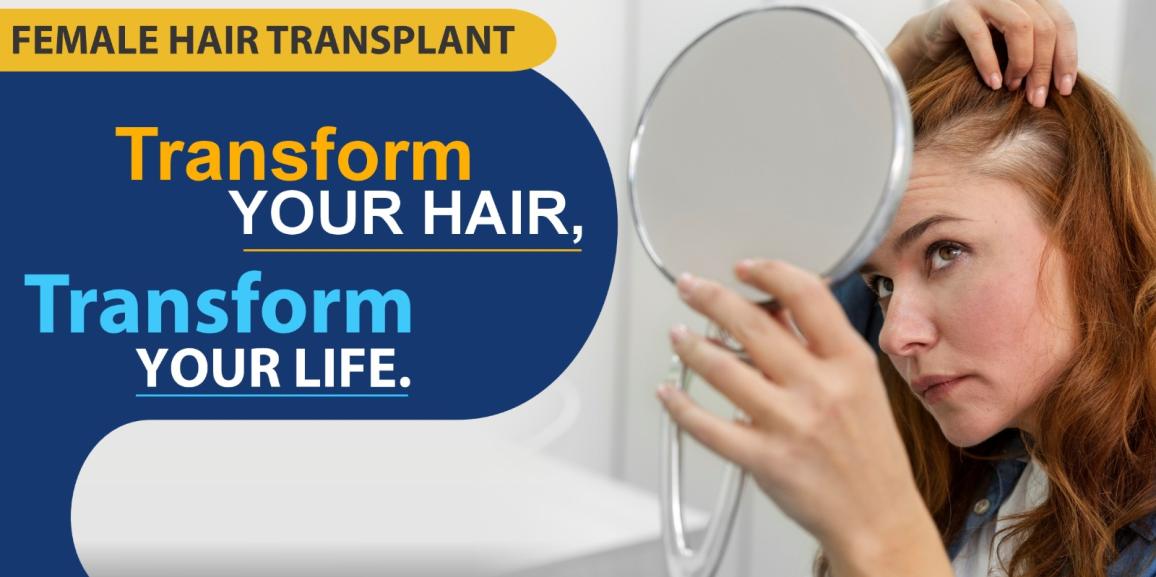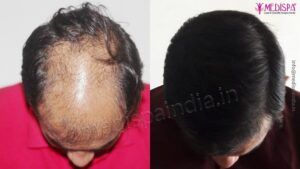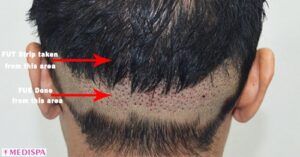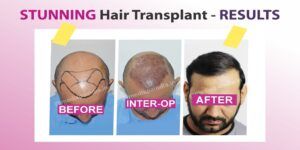
Hair transplant in India has gained widespread acceptance among the general population. Nowadays, individuals experiencing hair loss are increasingly seeking a permanent solution, which is where hair transplant comes into play. This minimally invasive surgical procedure offers remarkable results and a long-lasting remedy for hair loss. It is important to note that hair loss affects both males and females equally, and it can be quite embarrassing for both genders. In the case of females, hair loss can be particularly challenging as appearance holds significant importance, and hair plays a crucial role in determining one’s overall look. For many years, there was a misconception that hair transplant was not a viable option for females. However, this myth has been debunked, and it has been revealed that hair transplant can indeed be performed on females as well.
Hair transplant process
Hair transplantation is a complex process that involves relocating permanent hair follicles to areas of the scalp that are experiencing baldness. The severity of the bald area is evaluated using the Norwood classification, which categorizes it into seven different grades. As the stages progress, the extent of baldness increases. The donor area, where the hair follicles are taken from, typically consists of permanent hair roots found on the back and sides of the head, chest, axilla, beard, or pubic areas. By transferring these permanent hair roots, the results of the procedure are long-lasting and remain for a lifetime.
It is important to note that hair transplantation is a purely restorative procedure and should not be confused with regenerative methods. The procedure can only relocate existing hair follicles from one area to another and cannot stimulate the growth of new ones. Therefore, in order for a hair transplant to be successful, an ample supply of hair follicles must be available at the donor site to achieve satisfactory outcomes and ensure adequate hair growth.
Hair transplant
Hair transplantation is a popular choice for individuals looking to address hair loss on the scalp or to achieve fuller eyebrows. Women with a wider hairline can also benefit from this procedure by creating a new hairline that enhances their appearance. This cosmetic surgery involves harvesting hair follicles from donor sites with permanent or DHT-resistant roots, which are then transplanted to areas with hair loss. The two main techniques used in hair transplantation are FUT and FUE.
Hair transplant techniques
The hair transplant procedure is primarily carried out using two main techniques:
- FUT hair transplant: The FUT technique involves the removal of a strip of hair from the donor area, which is then taken to the graft separation room for individual separation of the hair follicles. The harvested graft is then successfully transplanted to the desired bald area. The donor area is carefully sutured using an advanced technique called trichophytic closure, which ensures minimal scarring that is almost invisible. One advantage of this technique is that it allows for the harvesting of a higher count of hair follicles, typically around 3000 – 3500.
- FUE hair transplant: In the FUE technique, the hair follicles are extracted individually, one by one, using a punch tool. The punch tool is inserted into the skin at a specific depth and angle, and the hair follicle is then engaged and pulled out. The extracted hair follicles are then transplanted to the desired bald area without wasting much time. The FUE technique can successfully extract around 2000 – 2500 hair follicles.
The choice between these techniques depends on the specific situation of hair loss, including factors such as age, sex, quantity of hair follicles in the donor area, the need for hair grafts in the bald area, and the extent of baldness.
How to deal with female hair loss?
Female hair loss is a common issue that many women tend to overlook until it becomes more noticeable. If you notice significant hair loss, it is advisable to seek medical assistance to determine the cause and address it promptly. Doctors often recommend medication as a first step, but some women may experience relapses once the treatment is discontinued. PRP therapy is another effective option for early hair loss, while hair transplant remains a viable solution if other treatments are not successful. When considering female hair transplant, it is crucial to select a reputable clinic and an experienced surgeon to ensure a successful procedure.
Hair transplant feasibility in women
The feasibility of hair transplant in women is a topic that is often overlooked compared to hair transplant in men. However, it is important to note that the success rate of the procedure in women is remarkably high, ranging from 95% to 100%. Although performing a hair transplant in females can be challenging, an experienced surgeon can execute it flawlessly.
Similar to male hair transplant procedures, the basic techniques used for female hair transplant include FUT (Follicular Unit Transplantation) and FUE (Follicular Unit Extraction). In most cases, FUT is preferred for women due to the requirement of a higher count of hair grafts. Additionally, many women prefer the no-shave approach, which is possible with FUT hair transplant technique.
To perform a hair transplant with a no-shave approach, the surgeon carefully prepares micro slits at the recipient site for the transplantation of hair follicles. It is crucial for the surgeon to exercise caution during this process to avoid damaging the existing hair follicles adjacent to the recipient area.
Therefore, it is highly recommended to diligently search for a skilled hair transplant surgeon to ensure a successful procedure.







